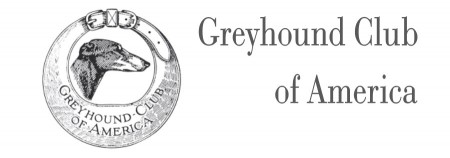As I considered what to write about at the close of 2021 and for the beginning of 2022, I thought about living with my older dogs. Think about the dogs that have been with you for so many years. Think about the faithful, senior dogs that have seen you through these tough past two years of Covid confinement. The dogs have been there for each of us when no one else could be in many cases. I am certainly grateful for their company and comfort. They are more patient with us and more willing to wait for you as they lay comfortably in their favorite spot, waiting for you to make the first move.
Taking care of the geriatric greyhound is not always easy as many of you who own big dogs well know. One of my tactics has always been to make them as safe as possible. I make sure that there is a carpeted pathway everywhere they need to go. The hardwood and tiled floors are not a friend to an older dog, which I found out the hard way, when I came home to a dog splayed out on the floor. He attempted to get up many times and had rubbed skin raw and could not stand when I picked him up. Several days and a lot of decadron later, he came home walking very tentatively. I’m happy to say that after three months time he was running in the fields once again. I have watched my dogs carefully ever since to determine when those rug runners need to come out. Another place to take care is out with the pack or even in the dog park if there is no pack at home. I often hear of the challenge to the old alpha dog that leads to tears and punctures or sometimes just innocent play that knocks them off their feet. Look for that tentative step, the wider than normal stance, or the unsteady gait that signals it is time for them to spend outdoor time with you and not other dogs. It is our responsibility to keep them safe.
How do we keep them healthy? Their food needs change and deciding the time to reduce their protein portions needs to be done in consultation with your veterinarian. I make it a practice after age 9 to start having blood work performed every six months to monitor liver and kidney values as well as blood counts. Changes to diet and supplementation can mean a longer life for these old guys we love so much. Greyhounds tend to have bad dental hygiene. It is important to keep their mouths clean to avoid dental disease and abscesses. I have found this to be my hardest chore as my dogs have never been willing participants in my efforts to brush their teeth! Older dogs frequently have lumps and bumps that need to be evaluated and watched. I have not seen lipomas, fatty tumors that are benign; often in my Greyhounds but they do on occasion appear. Any new bumps or any changes to bumps should be evaluated by your veterinarian to be sure they are benign before they get too big. Even a lipoma can cause problems when they arise in an area that causes rubbing and abrasion of the skin. Like their human friends, Greyhounds can have issues with their joints which are painful and interfere with the quality of their life. Keeping them moving with short walks they can tolerate is an important step to keeping them flexible and on their feet and it doesn’t hurt you either. Alternative therapies like chiropractic, acupuncture, and laser therapy are all options that may contribute to the comfort of all dogs but more especially so as they age. Long necks, backs, and legs easily find a way to become misaligned especially as muscles change with age.
I asked a few other Greyhound breeders what they do differently with their seniors. Here is a response by Bruce Clark of Shylo Greyhounds. “The only things I do for my older dogs, is that they usually wear coats all through the winter, and have blankets and rugs inside for them to stay warm. One thing I have found useful is to get a full blood panel done on the older dogs to check and make sure that there aren’t any unforeseen issues with liver or kidney function. That has really helped me find out ahead of time if there are any problems developing that we can head off ahead of time. I try to do that once a year as a preventative measure”.
There are many things to keep front of mind with our senior dogs, but they are so worth it!
